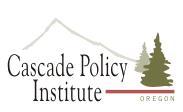
By Steve Buckstein
Cascade Policy Institute
Oregon Governor John Kitzhaber, fresh off his early October special legislative session “Grand Bargain” success, says he will now turn his attention to tax reform. He has plenty of company in Oregon’s recent history.
Governor Barbara Roberts, concerned that property tax limitation Measure 5 which passed in 1990 would decimate state finances (it didn’t), embarked on her Conversation with Oregon to find out what the average voter might accept in the way of tax and other reforms. Thwarted by the divided legislature, she later supported legislatively referred Measure 1 in 1993, which proposed a new five percent sales tax to fund education. The referral also offered property and income tax reductions. Voters said thanks, but no thanks, with a resounding 75% No vote. It marked the ninth time in state history that voters had rejected adding any state sales tax on top of property and income taxes.
Most recently, Governor Ted Kulongoski appointed members to the legislatively created Comprehensive Revenue Restructuring Task Force in 2007, but it was clear to me (as a member of the Task Force) that no serious “restructuring” was in the cards.
Ask the average Oregonian what “tax reform” means, and they are likely to say it means “more taxes.” And, so far they’d be correct.
Before Governor Kitzhaber has even hinted at specifics of his upcoming tax reform plan, several state legislators are fleshing out their own version of “more taxes” which includes a five percent sales tax coupled with property and income tax reductions. This time, they have in hand a Legislative Revenue Office analysis that says it will create 55,405 new jobs and raise $488 million a year in net tax revenue.
So again, this latest “tax reform” discussion seems to focus on raising more money for the state, thus leaving less money for its citizens and visitors. The concept of “spending reform” doesn’t seem to be on the table, and why should it if legislators and the Governor truly believe that government spending is more important than our own family budgets?
As I’ve noted previously, “Any sales tax is dead in this state―unless coupled with elimination of another tax. Reducing other tax rates won’t sell a sales tax.” That isn’t just my prediction, it’s the expert opinion of Portland pollster Adam Davis, based on focus groups he did for Governor Kulogoski’s Task Force in 2007 and more recent quantitative analysis that convinced him that Oregonians will not accept a third tax…period.
This latest legislative proposal seems determined to make the same mistake that legislative referral Measure 1 made in 1993, blindly hoping that somehow, some way, Oregonians will believe politicians when they promise to lower other tax rates in return for creating a new third tax. But history shows that voters don’t believe such promises. Unless the property or income tax is entirely wiped off the books (I prefer eliminating the income tax), an Oregon sales tax seems destined to be soundly defeated for the tenth time since statehood in 1859.
Even if by some miracle a third tax were approved by voters, it wouldn’t solve our state’s fiscal problems. The best way to do that is to tackle “spending reform” first, finding ways to reduce the size and scope of government. Otherwise, any “tax reform” simply will mask our fiscal problems for a while by allowing government to continue to grow until once again it prices itself above our ability to pay.
Steve Buckstein is Founder and Senior Policy Analyst at Cascade Policy Institute, Oregon’s free market public policy research organization.
Disclaimer: Articles featured on Oregon Report are the creation, responsibility and opinion of the authoring individual or organization which is featured at the top of every article.

